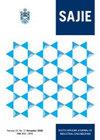减少砖厂多余浪费的精益六西格玛方法:案例研究
IF 0.5
4区 工程技术
Q4 ENGINEERING, INDUSTRIAL
引用次数: 0
摘要
秘鲁公司的工艺砖摊位目前的销售额显著增长。因此,砖厂寻求减少浪费的数量,以提高生产率和减少成本超支。在本研究中,对砖厂经济影响最大的问题是浪费过多。出于这个原因,提出了基于精益六西格玛(LSS)方法的模型的实施,应用Poka Yoke, Jidoka,标准化工作和Just in Time,以减少缺陷砖的数量和成本超支。该研究项目的重点是铃鼓砖,这是生产批次中产生的废物百分比最高的类型。为此,对现状进行了分析;确定并测量了问题的主要原因;然后使用精益六西格玛工具来解决根本原因。最后,本设计减少过热砖2.36%、湿砖2.01%、堆放不良砖1.8%,收缩率降低6.92%,六西格玛水平提高到3.9,减少了砖厂的损失。关键词:精益六西格玛,Poka Yoke, jiidoka,标准化工作,砖厂,废物本文章由计算机程序翻译,如有差异,请以英文原文为准。
LEAN SIX SIGMA METHODOLOGY TO REDUCE EXCESS WASTAGE IN A BRICKYARD: A CASE STUDY
Peruvian companies’ craft brick stands currently experience significant growth in sales. Thus brickyards seek to reduce the amount of waste to increase productivity and reduce cost overruns. In this study, the problem that has the greatest economic impact on a brick company is the excessive amount of waste. For this reason, the implementation of a model based on the Lean Six Sigma (LSS) methodology is proposed, applying Poka Yoke, Jidoka, Standardised Work, and Just in Time in order to reduce the number of defective bricks and cost overruns. The research project focused on the tambourine brick, the type whose percentage of generated waste is the highest in the production batch. To do this, the current situation was analysed; the main causes of the problem were identified and measured; and then Lean Six Sigma tools were used to attack the root cause. Finally, the proposed design reduced overheated bricks by 2.36%, wet bricks by 2.01%, and poorly stacked bricks by 1.8%, obtaining a 6.92% reduction in shrinkage and increasing the level of Six Sigma to 3.9, which contributed to the reduction of losses in the brickyard. Keywords: Lean Six Sigma, Poka Yoke, Jidoka, Standardized Work, brickyard, waste
求助全文
通过发布文献求助,成功后即可免费获取论文全文。
去求助
来源期刊
CiteScore
1.10
自引率
20.00%
发文量
15
审稿时长
6 weeks
期刊介绍:
The South African Journal of Industrial Engineering (SAJIE) publishes articles with the emphasis on research, development and application within the fields of Industrial Engineering and Engineering and Technology Management. In this way, it aims to contribute to the further development of these fields of study and to serve as a vehicle for the effective interchange of knowledge, ideas and experience between the research and training oriented institutions and the application oriented industry. Articles on practical applications, original research and meaningful new developments as well as state of the art surveys are encouraged.

 求助内容:
求助内容: 应助结果提醒方式:
应助结果提醒方式:


